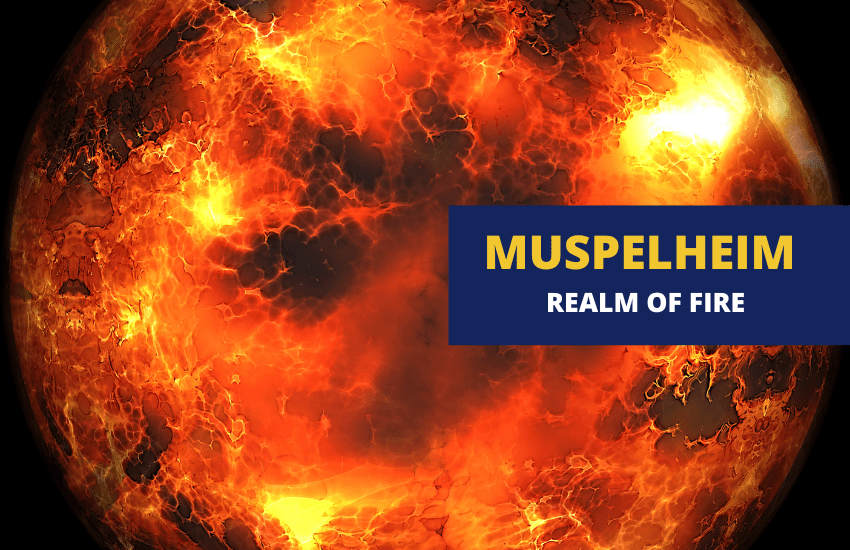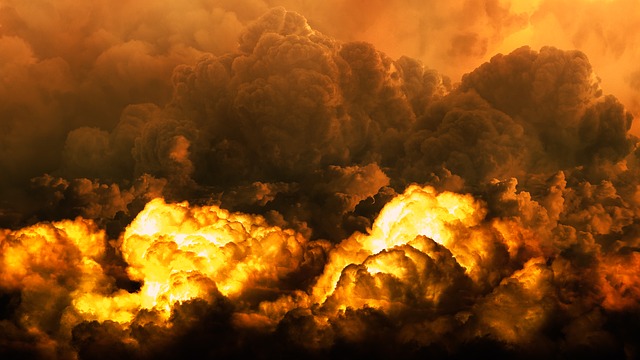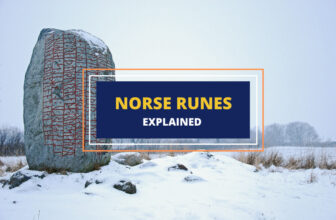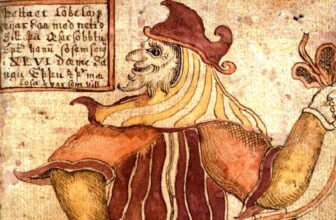
Table of Contents
Muspelheim, or just Muspell, is one of the core Nine Realms of Norse mythology. A place of ever-burning hellish fire and the home of the fire giant or fire jötunn Surtr, Muspelheim isn’t often mentioned in Norse myths, yet it plays a pivotal role in the overarching story of Nordic legends.
What is Muspelheim?
Muspelheim is easy to describe – it’s a place of fire. Not much else is said of the place as not much else can apparently be found in it. The gods and heroes of Nordic myths rarely venture there too, for obvious reasons.
We can’t even find much meaning in the name, as evidence of its etymology is scarce. Some speculate that it comes from the Old Norse term mund-spilli, meaning “wreck the world” or “world destroyers” which would make sense given the events of Ragnarok, the myth of the end of the world in Nore mythology. Still, even that interpretation is mostly speculative.
So, what else can we say about Muspelheim other than it being a place of fire? Let’s go over the two major myths that include Muspelheim to find out.

Muspelheim and the Norse Creation myth
In Norse myths, the first creature to come into existence is the giant cosmic jötunn Ymir. A being born out of the cosmic void Ginnungagap, Ymir was birthed when the frozen droplets floating away from the ice realm of Niflheim met with the sparks and flames going up from Muspelheim.
Once Ymir came into being, then followed the ancestors of the gods who birthed the Asgardian gods by mixing with Ymir’s offspring, the jötnar.
None of this could have started, however, if Muspelheim and Niflheim didn’t exist in the void of Ginnungagap.
These were the first two of the Nine Realms of Norse mythology, the only two to exist before any of the rest or before any life existed in the Cosmos. In that sense, Muspelheim and Niflheim are more cosmic constants than anything else – primordial forces without which nothing would have existed in the universe.
Muspelheim and Ragnarok
Muspelheim not only gives life but takes it away too. Once the wheel of the events in Nordic myths began turning and the gods established all of the Nine Realms, Muspelheim and Niflheim were essentially pushed to the side. Not much seemed to happen there for thousands of years with the fire jötunn Surtr ruling over Muspelheim in relative peace together with the rest of the fire jötnar.
Once the events of Ragnarok, the end of the world, begins to near, however, Surtr will stoke the fires of Muspelheim and prepare for battle. For just as the fire realm had helped birth the ordered world of the gods, so it will help to reclaim it and toss the universe back into chaos.
Surtr’s sword will burn brighter than the sun and he willuse it to kill the Vanir god Freyr in the final battle. After that, Surtr will march his fire jötnar across Bifrost, the Rainbow Bridge, and his army will sweep over the region like wildfire.
The fire jötnar wouldn’t conquer Asgard alone, of course. With them, they will have the frost jötnar coming from Jötunheim (not Niflheim) as well as the turncoat god Loki and the souls of the dead he will have taken from Helheim to also march onto Asgard.
Together, this motley crew of primordial evil not only manages to destroy Asgard but also completes the cyclical nature of the Nordic worldview – what came from chaos must return to it eventually.
Symbolism of Muspelheim
Muspelheim can seem like a stereotypical “hell” or “fantasy fire realm” at first glance, but it is much more than that. A true primordial force, Muspelheim was an aspect of the cosmic void Ginnungagap eons before any gods or humans existed.
What’s more, Muspelheim and all the fire giants or jötnar are foretold to destroy the ordered world of the Asgardian gods and toss the universe back to chaos. In that sense, Muspelheim and the jötnar that populate it represent cosmic chaos, its ever-presence, and its inevitability.
Importance of Muspelheim in Modern Culture
Muspellheim isn’t often referenced in modern pop culture just as it’s not the most frequently mentioned realm in Norse mythology. Nevertheless, its undeniable importance to the Nordic people can be seen every time Muspelheim is referenced in modern culture.
One of the classic pre-modern examples of that is Christian Andersen’s fairy tale The Marsh King’s Daughter where Muspelheim is also called Surt’s Sea of Fire.
More recent examples include the Marvel comics and the Marvel Cinematic Universe where the character Thor frequently visits Muspelheim. In the 2017 movie Thor: Ragnarok, for example, Thor visits the rocky and fiery Muspelheim to capture Surtr and bring him to Asgard himself – a mistake that leads to Surtr later destroying Asgard singlehandedly.
On the video game front, in the God of War game where the player has to go and complete the Six Trials of Muspelheim. In the Puzzle & Dragons video game, the player has to defeat creatures such as the Infernodragon Muspelheim and the Flamedragon Muspelheim.
There’s also the Fire Emblem Heroes game where a conflict between the fire realm Muspell and the ice realm Niflheim is at the core of most of the game’s second book.
In Conclusion
Muspelheim is a realm of fire. It’s a place that uses its heat both to create life in the universe as well as to extinguish it once that life strays too far from the balance of the cosmic chaos.
In that sense, Muspelheim, just like the ice realm Niflheim, represent the primordial force of the wilderness the Norse people respected and feared.
Even though Muspelheim isn’t often mentioned in Nordic myths and legends outside of the Norse creation myth and Ragnarok, the fire realm is ever-present in Norse mythology.








